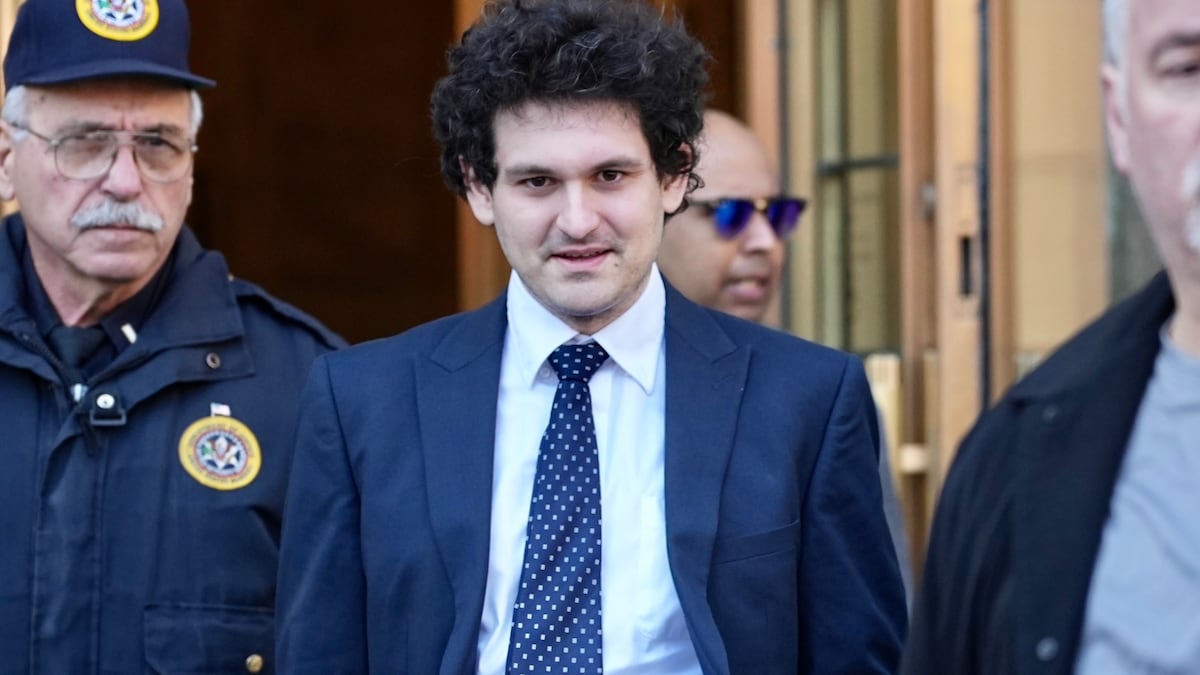- Jurors began their deliberation in the trial of Sam Bankman-Fried Thursday afternoon.
- If they don’t reach a verdict Thursday, jurors will resume deliberation on Monday.
- Earlier in the day, prosecutors rebutted the defence’s closing argument, and said it was “outlandish” to suggest cooperating witnesses were pressured into doing so by the government.
Jurors in the trial of Sam Bankman-Fried have gathered to decide whether the disgraced entrepreneur committed several multibillion-dollar crimes related to last year’s spectacular collapse of crypto exchange FTX.
Judge Lewis Kaplan asked the jury if they would be willing to deliberate into the night Thursday and they agreed. If jurors do not reach a verdict on Thursday, they will resume deliberation on Monday morning.
Bankman-Fried is facing seven charges, including conspiracy to defraud FTX customers, investors and lenders. He has pleaded not guilty. He faces what would effectively be a life sentence if he is found guilty.
The jury heard one final argument Thursday morning, this time from Assistant US Attorney Danielle Sassoon. Sassoon was tasked by rebutting the closing argument made Wednesday by Mark Cohen, Bankman-Fried’s defence attorney.
During closing arguments, lawyers for the government and for Bankman-Fried collapsed five weeks of evidence and testimony into two lengthy monologues.
Assistant US Attorney Nicolas Roos cast Bankman-Fried as a “celebrity chasing” entrepreneur, a billionaire who repeatedly stole from customers to satisfy his bottomless greed.
The scheme was simple, according to the prosecutor: Alameda Research, a crypto trading firm Bankman-Fried founded in 2017, stole from customers of FTX, the crypto exchange he founded in 2019. Alameda did so using “special privileges” built into FTX software at Bankman-Fried’s request. It also accepted customer deposits on FTX’s behalf, and spent those, Roos said.
Cohen, meanwhile, said his client was just a “math nerd” who made honest mistakes as his crypto companies quickly grew to manage billions of dollars.
Making bad business decisions isn’t a crime, Cohen told the jury. If they believe Bankman-Fried was acting in good faith, they could find him “not guilty” on all counts, he added.
“FTX did not have a sufficiently built out risk management system, nor did it have a chief risk officer, someone to head up the risk management function,” Cohen said.
Cohen also noted that Bankman-Fried testified that he believed Alameda was able to borrow from FTX customers because the trading firm had positive “net asset value” — meaning its assets were greater than its liabilities — until a collapse in the value of Alameda’s crypto tokens last November.
Cohen also asked jurors to dismiss the testimony of Bankman-Fried’s three closest associates, Caroline Ellison, Gary Wang, and Nishad Singh. All three have pleaded guilty to fraud and other charges, and are cooperating with prosecutors. Their cooperation could help them dodge decades in prison, Cohen said.
The government’s response
In her rebuttal Thursday, Sassoon said it was “outlandish” to suggest the cooperating witnesses were “pressured to lie, that they pled guilty to crimes they didn’t commit.”
Caroline Ellison and company had no incentive to lie, Sassoon said: their cooperation agreement requires that they tell the truth.
“If a cooperator is caught in a lie, any lie, the agreement gets ripped up,” she told jurors.
Moreover, Alameda’s net asset value was irrelevant, according to Sassoon.
Whether Alameda was liquid or solvent, whether it held gold bars or junk, Bankman-Fried defrauded customers when he told them FTX was a uniquely safe place to trade crypto and insisted it was walled off from Alameda.
The lack of a chief risk officer, meanwhile, “isn’t a defence,” Sassoon said. “It’s a strategy.” The prosecutor likened it to robbing a jewellery store and saying it was okay because the store didn’t have a security guard.
Finally, Sassoon told jurors that it does not matter whether Bankman-Fried set out to defraud customers from the inception of FTX, or whether he only learned of Alameda’s debt to FTX customers in September 2022, as he has claimed. His failure to come clean after he learned of that debt made him complicit in the conspiracy to defraud customers, she said.
Now it’s up to the jury to decide whose version of events they believe.
Aleks Gilbert is DL News’ New York-based DeFi Correspondent. Reach out to him with tips at aleks@dlnews.com.
